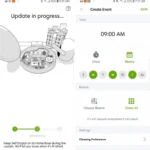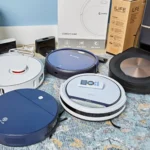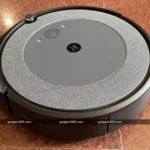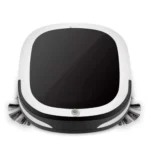Are you tired of traditional vacuum cleaners that require manual effort and still leave behind dirt and dust in hard-to-reach corners? A smart vacuum cleaner with sensors may be just the solution you need. These intelligent devices use various sensors to navigate your home, detect obstacles, and clean efficiently. But what are these sensors, and how do they benefit you? In this article, we’ll explore the advantages of having sensors in a smart vacuum cleaner, how they affect the price, and the limitations you need to be aware of. Let’s dive into the world of smart cleaning technology!
What Are Sensors in Smart Vacuum Cleaners?
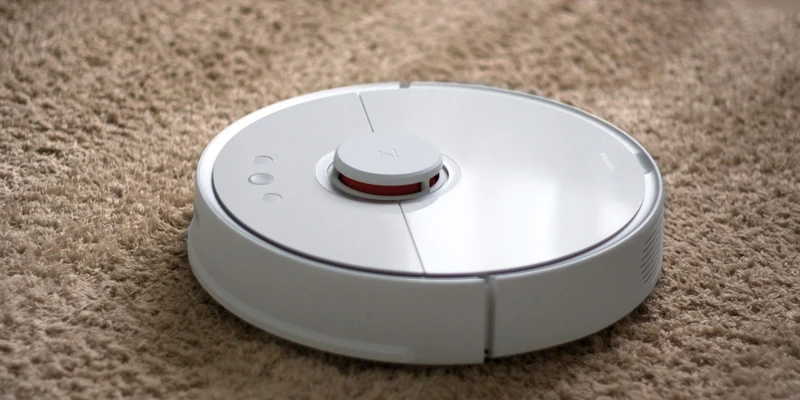
Have you ever heard of smart vacuum cleaners? They are revolutionizing the way people clean their homes. Unlike traditional vacuum cleaners, smart vacuum cleaners utilize advanced technologies to improve the cleaning experience. One of the main features of these new-age vacuums is the use of sensors. The sensors are small devices that are integrated into the vacuum cleaner and allow it to perform a variety of functions. They can help with navigation, cleaning performance, battery usage, dustbin emptying, and obstacle detection. It’s truly amazing how much these sensors can impact the way we clean. In the next section, we’ll discuss the different types of sensors used in smart vacuums. If you’re interested in learning more about how sensors improve cleaning efficiency, check out the article about smart sensors and cleaning efficiency.
Types of Sensors
One of the key components of any smart vacuum cleaner is its sensors. These electronic components work in tandem to provide a more efficient cleaning cycle. There are several types of sensors that often feature in smart vacuum cleaners:
| Types of Sensors | Description |
| Infrared Sensors | These types of sensors use infrared light to detect obstacles present in the cleaner’s cleaning path. When an obstacle is detected, the cleaner re-routes its path to avoid any collisions. |
| Ultrasonic Sensors | Ultrasonic sensors use high-frequency sound waves to detect the distance between the cleaner and objects in its surroundings. These sensors can be used to create a detailed map of the cleaning route and ensure the cleaner moves in a straight line. |
| Touch Sensors | Touch sensors detect when the cleaner has come into contact with an object. These sensors are useful in preventing the cleaner from damaging fragile objects such as vases or electronics. |
| Cliff Sensors | Cliff sensors are used to detect drops or cliffs. When the cleaner approaches a drop, the sensor detects it and ensures that the cleaner does not fall off the edge. |
| Optical Sensors | Optical sensors use light to detect dirt and debris on the floor. Once the debris is located, the vacuum cleaner adjusts its suction power accordingly. |
Each sensor plays a significant role in ensuring that the cleaner operates efficiently and effectively. Infrared sensors are particularly useful when it comes to obstacle detection, while ultrasonic sensors are ideal for indoor mapping. Touch sensors are essential for preventing damage to objects near the cleaner, and cliff sensors are necessary for protecting the machine itself. Lastly, optical sensors are particularly useful for cleaning carpets, and they can also be used for reducing noise pollution.
Having a combination of these sensors is what makes smart vacuum cleaners so efficient and reliable at cleaning. While they can come with a higher price tag, the benefits they offer in terms of better cleaning performance and efficient battery usage make them well worth the investment.
Advantages of Having Sensors in Smart Vacuum Cleaners
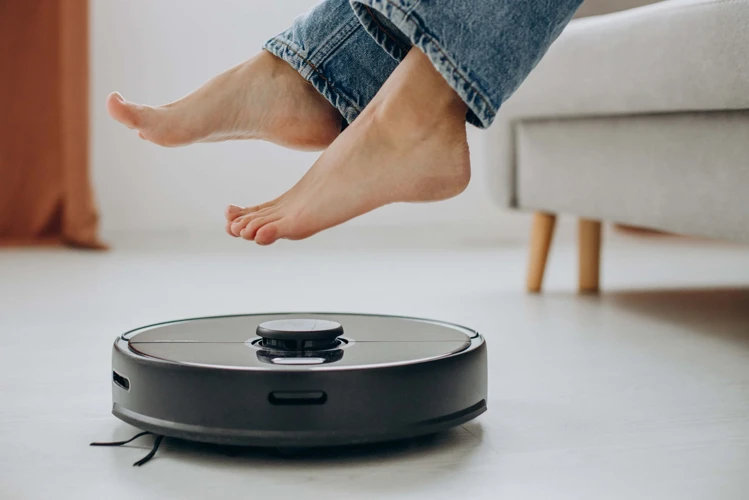
As homes become smarter, so do the devices we use to keep them clean. Smart vacuum cleaners with sensors are gaining popularity among homeowners because of the many benefits they offer. These devices use a variety of sensors to navigate around your home, clean more efficiently, and save you time and energy. In this section, we’ll explore the advantages that come with having sensors in your smart vacuum cleaner, including improved navigation and mapping, better cleaning performance, efficient battery usage, automatic dustbin emptying, and obstacle detection and prevention. Understanding the benefits of these sensors will help you make an informed decision when choosing the right smart vacuum cleaner for your home. Before we dive into the specific advantages, let’s take a closer look at the types of sensors you can find in smart vacuum cleaners. To learn more, check out our previous section that covers /types-of-sensors-smart-vacuum/ in more detail.
Improved Navigation and Mapping
One of the primary benefits of having sensors in a smart vacuum cleaner is the improvement of navigation and mapping. The sensors in smart vacuum cleaners are designed to gather information about the environment around them, which allows them to navigate the room more effectively and efficiently. This results in a better overall cleaning experience for the user.
Here are some ways in which sensors improve navigation and mapping:
- Precision navigation: Smart vacuum cleaners equipped with sensors can navigate the room much more precisely than those without. The sensors help the device understand its location, which means it can create a more detailed map of the space.
- Efficient cleaning path: With the help of sensors, smart vacuum cleaners can choose the most efficient cleaning path, ensuring that every nook and cranny of the room is covered. This means less time spent cleaning and a more thorough job overall.
- Virtual boundaries: Some smart vacuum cleaners can create virtual boundaries using sensors. This allows users to block off certain areas of the room, so the vacuum cleaner won’t accidentally bump into furniture or other objects.
- Zoning: Certain advanced smart vacuums also use sensors to create cleaning zones, which allow users to prioritize cleaning specific areas of the house. For example, you can set the vacuum to clean only the kitchen or the living room, depending on your needs.
Improved navigation and mapping resulting from the use of sensors in smart vacuum cleaners makes cleaning faster, more effective, and less frustrating for users. It’s just one of the many benefits of using a smart vacuum cleaner with advanced technology.
Better Cleaning Performance
Smart vacuum cleaners with sensors significantly improve the cleaning performance compared to traditional vacuum cleaners. Here are the ways sensors enhance the cleaning performance of smart vacuum cleaners:
- Customized Cleaning Patterns: The sensors in smart vacuum cleaners allow them to create customized cleaning patterns based on the layout of the room. This ensures that every inch of the floor is cleaned thoroughly and efficiently. The vacuum cleaner can detect areas with high foot traffic and clean them more frequently than the rest of the room.
- Automatic Adjustment of Suction Power: Smart vacuum cleaners with sensors can automatically adjust suction power based on the surface they are cleaning. For instance, a carpeted area requires more suction power compared to a hardwood floor. The vacuum cleaner adjusts the suction power accordingly, ensuring optimal cleaning performance.
- Smart Debris Detection: Sensors in smart vacuum cleaners can detect debris on the surface and adjust the cleaning settings to accommodate them. For instance, the vacuum cleaner can increase suction power when detecting a pile of dust or debris to ensure thorough cleaning.
Smart vacuum cleaners with sensors offer better cleaning performance due to their ability to adjust to different cleaning surfaces, detect debris, and move in a customized cleaning pattern. These features reduce the need for manual intervention, which saves time and effort.
Efficient Battery Usage
Smart vacuum cleaners equipped with sensors provide a wide range of benefits that make household cleaning easier and more efficient. One of the significant advantages of having sensors in a smart vacuum cleaner is efficient battery usage. With sensors in place, the vacuum cleaner can detect the level of battery charge and adjust its cleaning time accordingly to avoid running out of power in the middle of cleaning.
The table below highlights some of the essential features that make the sensors in smart vacuum cleaners so efficient in terms of battery usage:
| Feature | Explanation |
|---|---|
| Auto-Charging | If the vacuum cleaner’s battery is low, it can return to its charging station automatically to recharge, so you don’t have to worry about the battery dying mid-cleaning. |
| Smart Scheduling | Sensors enable the vacuum cleaner to adjust its cleaning schedule based on the battery charge, which ensures that it does not exceed the battery life. |
| Power Management | The vacuum cleaner adjusts its cleaning power depending on the type of flooring it is cleaning, which ultimately saves energy and extends the battery’s life. |
| Standby Mode | In standby mode, the vacuum cleaner can conserve its battery by hibernating when not in use and only waking up when there is movement around. |
These features help the smart vacuum cleaner to operate optimally without straining the battery. As such, you can expect a more extended runtime, fewer interruptions, and more efficient battery usage overall.
The efficient use of the battery extends the life of the vacuum cleaner and also saves you money that you would have otherwise spent replacing batteries frequently. Additionally, an efficient battery guarantees that the vacuum cleaner can complete cleaning tasks without requiring constant monitoring, thus freeing up your time and effort.
The integration of sensors in a smart vacuum cleaner yields vast improvements in battery usage. With a more efficient use of the battery, you can expect uninterrupted cleaning and an extended lifespan for your vacuum cleaner.
Automatic Dustbin Emptying
One of the most convenient benefits of having sensors in a smart vacuum cleaner is automatic dustbin emptying. This feature is usually found in high-end models and is designed to make the cleaning process as hands-free as possible.
So, how does it work? The vacuum cleaner is equipped with a sensor that detects when the dustbin is full. When this happens, the sensor sends a signal to the robot, which then makes its way back to the charging station. Once it’s docked, the robot empties the dustbin and returns to its cleaning task, all without any human intervention.
This is a major convenience, especially for those who have busy schedules and might not have the time to manually empty the dustbin every time it gets full. Additionally, it ensures that the vacuum cleaner is always working at peak performance, as a full dustbin can lead to a decrease in suction power and cleaning effectiveness.
Here’s a breakdown of some of the advantages of automatic dustbin emptying:
| Advantages | Explanation |
|---|---|
| Convenience | No need to manually empty the dustbin, saving time and effort |
| Efficiency | The vacuum cleaner is always working at peak performance with an empty dustbin |
| Improved Air Quality | An empty dustbin ensures that dust and debris are not spread around the room |
While this feature is certainly convenient, it can also add to the cost of the vacuum cleaner. High-end models with automatic dustbin emptying tend to be more expensive than those without. However, for those who prioritize convenience and efficiency, the extra cost may be worth it.
It’s important to note that like any technological feature, automatic dustbin emptying can have its limitations. For example, the dustbin can only hold a certain amount of debris before it needs to be emptied, so this feature may not work as well for large cleaning jobs. Additionally, the system can malfunction if not properly maintained or if the sensors are blocked by debris or other obstructions.
The automatic dustbin emptying feature is an excellent example of how sensors can improve the functionality of a smart vacuum cleaner. Its advantages make it a very appealing feature for those looking to simplify their cleaning process and who value convenience and efficiency.
Obstacle Detection and Prevention
Smart vacuum cleaners with sensors have the ability to detect obstacles and prevent them from obstructing the cleaning process, ensuring a smooth and uninterrupted cleaning experience.
1. Laser sensors: Some of the high-end smart vacuum cleaners feature laser sensors that enable them to scan and map the environment, detect obstacles, and avoid collisions. These sensors emit laser beams and measure their reflection to create a 3D map of the surroundings.
2. Infrared sensors: Many smart vacuum cleaners use infrared sensors to detect objects and obstacles. These sensors emit infrared light and measure the reflection to determine the distance between the vacuum cleaner and the objects. This helps the vacuum cleaner to avoid obstacles and clean around them.
3. Bumper sensors: Bumper sensors are an important feature in many smart vacuum cleaners. These sensors are located around the vacuum cleaner and detect when the vacuum cleaner makes contact with an object. When the bumper sensor detects an obstacle, it sends a signal to the vacuum cleaner to change direction and move around the object.
4. Drop sensors: Smart vacuum cleaners also come equipped with drop sensors that detect stairs and other drop-offs. These sensors prevent the vacuum cleaner from falling down stairs or other high places. This feature ensures that the vacuum cleaner does not get damaged due to a fall.
Having obstacle detection and prevention sensors in your smart vacuum cleaner saves you from the hassle of constantly having to keep an eye on it while it cleans. It helps the vacuum cleaner to move around the room more efficiently and avoid getting stuck or tangled in furniture, cords or other obstacles, ensuring a thorough clean.
How Sensors Affect the Price of Smart Vacuum Cleaners
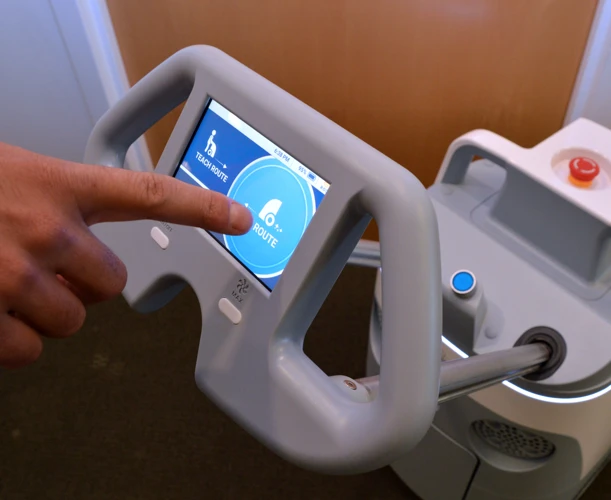
The addition of sensors to smart vacuum cleaners has undoubtedly improved their functionality and performance. However, with this advanced technology comes a higher price tag. It’s important to understand how sensors affect the overall cost of smart vacuum cleaners, as it can vary greatly depending on the type of sensor and the quality of the vacuum’s overall build. In this section, we’ll explore the impact of sensors on the price of smart vacuum cleaners at different price points, from high-end models to budget-friendly options. Let’s dive in and examine the factors that go into the cost of a sensor-equipped smart vacuum cleaner.
High-End Smart Vacuum Cleaners
When it comes to high-end smart vacuum cleaners, you can expect to find a wide array of innovative features, including cutting-edge sensors. These sensors often use the latest technology, such as LIDAR (Light Detection and Ranging), to provide unbeatable cleaning performance.
One of the key advantages of high-end smart vacuum cleaners with sensors is their ability to map out an entire space with incredible accuracy. This means that they can easily navigate around obstacles, clean every nook and cranny of a room, and even create a virtual map of your home that you can view and control from your smartphone.
Another major benefit of high-end smart vacuum cleaners is their outstanding cleaning performance. With sensors that detect dirt and debris, these vacuums can adjust their suction power and brush rotations to ensure that even the tiniest particles are picked up from your floors and carpets. Some models even use artificial intelligence to learn your cleaning habits and adjust their cleaning patterns accordingly.
High-end smart vacuum cleaners with sensors also have highly efficient battery usage. They can detect when their battery power is running low, and will automatically return to their charging dock to recharge before resuming cleaning where they left off.
Some high-end models have a self-emptying dustbin feature that utilizes sensors to notify the vacuum when the dustbin is full. The vacuum then locates its charging dock and empties the dustbin before returning to cleaning.
These advanced features come at a higher price point, but for those looking for a top-of-the-line cleaning experience and the latest technology, the investment is well worth it.
Mid-Range Smart Vacuum Cleaners
If you are looking for a smart vacuum cleaner that is equipped with sensors, but don’t want to break the bank, mid-range options might be the best choice for you. These vacuums offer a balance between technology and affordability, making it a great choice for many consumers.
1. Navigation: Most mid-range smart vacuums have navigation technology that utilizes a combination of sensors to navigate your home, ensuring your floors are cleaned efficiently.
2. Battery: Budget options often come with short battery lives that can limit how much cleaning the vacuum can do. Mid-range smart vacuums, on the other hand, often come with longer battery lives, making it easy to clean a large space without interruption.
3. Mapping: With sensors, the vacuum can create a map of your home and update it in real-time as it cleans. This helps the vacuum to clean your floors more efficiently and avoid obstacles like furniture and stairs.
4. Obstacle Detection: Mid-range smart vacuums have sensors that detect obstacles, allowing the vacuum to navigate around them or slow down so that it doesn’t collide with anything.
5. Cleaning Performance: These mid-range smart vacuums also have sensors that help with cleaning performance by detecting areas that need more attention, and adjusting the vacuum’s power accordingly.
Mid-range smart vacuums with sensors can be a great option for those who want an efficient cleaning experience without breaking the bank. With improved navigation, efficient battery usage, and obstacle detection, these vacuums can help make cleaning a breeze. However, it’s essential to note that there are limitations to these mid-range options, including environmental factors, interference with other electronics, and sensor malfunctions that should be considered before making a purchase.
Budget Smart Vacuum Cleaners
When it comes to budget smart vacuum cleaners, the inclusion of sensors is becoming increasingly common. However, compared to mid-range and high-end models, budget smart vacuum cleaners may have fewer sensors or lower-quality sensors. This can result in some limitations to their functionality.
1. Limited Navigation and Mapping: Budget smart vacuum cleaners may have basic sensors that allow them to navigate and avoid obstacles, but they may not have advanced mapping capabilities. As a result, they may miss some areas or not clean as thoroughly compared to higher-end models.
2. Reduced Cleaning Performance: The cleaning performance of budget smart vacuum cleaners may be affected by the quality of their sensors. They may not be able to detect dirt and debris as efficiently, resulting in less effective cleaning. Additionally, they may not be able to adjust their suction power based on the type of surface being cleaned.
3. Less Efficient Battery Usage: Since budget smart vacuum cleaners may have lower-quality sensors, they may also be less efficient in their use of battery power. This can result in shorter battery life or longer charging times.
4. No Automatic Dustbin Emptying: One of the advantages of having sensors in a smart vacuum cleaner is the ability to automatically empty the dustbin. However, this feature may not be available on budget models, as they may not have the necessary sensors or technology.
5. Limited Obstacle Detection: While budget smart vacuum cleaners may have obstacle detection sensors, they may not be as advanced as those in high-end models. This means they may have trouble navigating around complex obstacles or furniture.
However, despite these limitations, budget smart vacuum cleaners with sensors can still provide a valuable cleaning solution for those on a tight budget. They may not have all the bells and whistles of higher-end models, but they can still help keep a home clean with the added convenience of automation.
Limitations of Smart Vacuum Cleaners with Sensors
As amazing as it is to have smart vacuum cleaners with sensors in our homes, there are also a few limitations to consider. These limitations can have an impact on the overall effectiveness and reliability of the vacuum cleaner. It’s important to understand the potential issues that may arise when using smart vacuum cleaners with sensors before making a purchase. In this section, we will explore the various factors that can limit the performance of these devices.
Environmental Factors
Smart vacuum cleaners with sensors have become increasingly popular in recent years due to their ability to clean floors efficiently and autonomously. While these appliances undoubtedly have a lot of benefits, they are also subject to some limitations. One of the most significant challenges that sensors face is environmental factors, which can significantly impact their performance or even cause malfunctions.
Table:
| Environmental Factors | Description |
|---|---|
| Different Floor Types | The type of flooring can affect the performance of the sensors, as certain types of carpet or flooring material may be less conducive to effective cleaning. Additionally, debris like pet hair and small particles can clog the sensors, making them less effective. |
| Low Lighting | Smart vacuums may experience difficulties in sensing in low-light conditions. As a result, they can struggle to detect obstacles or make accurate navigational decisions. |
| Height of Furniture and Obstacles | The height of furniture and obstacles can impede or stop the vacuum’s ability to detect obstacles or avoid collisions. They may also accidentally bump into objects and create a hazard for itself or other household appliances. |
| Cluttered Floor Space | If the floors are cluttered or disorganized, the smart vacuum may experience difficulty moving around, which can cause navigation issues. Similarly, sensors may not detect the dirt and debris using algorithms and create blind spots in areas that have not been cleaned thoroughly. |
Some environmental factors can be controlled or mitigated easily, such as lighting conditions or decluttering the cleaning area. However, it is more challenging to address factors such as different flooring types or the height of furniture and obstacles. It is essential to select the right type of smart vacuum cleaner sensor that can adjust according to the particular needs of your home.
While environmental factors can be a limitation in the effectiveness of sensors in smart vacuum cleaners, there is no doubt that these appliances can significantly improve cleaning efficiency and reduce the amount of time and effort required for housekeeping. As technology continues to improve, we can expect more advanced sensors that can adapt to different environmental conditions and offer even more effective cleaning performance.
Interference with other electronics
Electronic devices emit electromagnetic waves that can interfere with other devices if they operate on similar frequencies. Smart vacuum cleaners that use sensors are not exempt from this issue. Interference with other electronics can lead to poor performance or even malfunction of the vacuum cleaner’s sensors.
The radio frequencies used in smart vacuum cleaners can cause interference with other wireless devices, such as routers, wireless speakers, and baby monitors. This interference can cause poor Wi-Fi connectivity and affect the range and performance of the other devices. Electrical noise generated by other appliances, such as microwaves, can also cause interference.
To mitigate this issue, manufacturers of smart vacuum cleaners use shielded cables and filters to reduce the electromagnetic interference. However, this does not always eliminate the problem. It is important to note that the degree of interference depends on the specific devices in the environment and the distance between them.
Users of smart vacuum cleaners with sensors should ensure that they keep other electronics away from the vacuum cleaner during use to minimize the risk of interference. They can try changing the Wi-Fi channel or upgrading their router to a more advanced, less crowded frequency.
Overall, interference with other electronics is a limitation to be aware of when using smart vacuum cleaners that rely on sensor technology. While manufacturers are taking steps to address this issue, users can also take proactive measures to minimize the risk of interference by being mindful of the devices in their environment.
| Advantages | Disadvantages |
|---|---|
| Improved Navigation and Mapping | Environmental Factors |
| Better Cleaning Performance | Interference with other electronics |
| Efficient Battery Usage | Sensor Malfunctions |
| Automatic Dustbin Emptying | |
| Obstacle Detection and Prevention |
Sensor Malfunctions
While sensors in smart vacuum cleaners are designed to improve their functionality, there is always a possibility of sensor malfunctions. Some of the common issues that may arise with sensors in smart vacuum cleaners are:
- Disruption due to external factors: Sensors can sometimes malfunction due to external factors like interference from other electronic devices in the vicinity. For example, if the vacuum cleaner’s sensors are getting mixed signals from other devices with similar frequency, it may cause the vacuum cleaner to malfunction.
- Buildup of dirt and dust: Since smart vacuum cleaners are designed to clean efficiently, it is inevitable that they will become dirty over time. The accumulation of dirt and dust on sensors can cause them to malfunction, affecting the overall performance of the vacuum cleaner.
- Wear and tear: Over time, the sensors in smart vacuum cleaners may become less effective due to wear and tear, which can cause the sensors to malfunction or become inaccurate. This can lead to the vacuum cleaner missing spots or not detecting obstacles accurately, which can result in a less effective clean.
It is important to note that not all sensor malfunctions can be fixed, and in some cases, it may be necessary to replace the sensors or the entire vacuum cleaner. As with any electronic device, it is important to follow the manufacturer’s instructions for maintenance and cleaning to reduce the risk of sensor malfunctions.
Conclusion
In conclusion, it is clear that having sensors in a smart vacuum cleaner has significant benefits that greatly enhance its performance compared to standard vacuum cleaners. By using a combination of different types of sensors, smart vacuum cleaners can navigate and map a room more efficiently, clean more thoroughly, use energy more efficiently, and automatically empty their dustbins. Additionally, sensors in smart vacuum cleaners can detect and avoid obstacles and prevent collisions, making them safer to use.
While there are some limitations to using smart vacuum cleaners with sensors, these are relatively minor, such as environmental factors or potential interference with other electronics. Additionally, these challenges can often be mitigated through careful placement or use of the device.
Overall, the advantages of having sensors in a smart vacuum cleaner are clear, and the technology is becoming more widely available and affordable. For consumers looking for a reliable and efficient way to keep their homes clean, a smart vacuum cleaner with sensors is an excellent investment. With improved navigation, cleaning performance, and energy efficiency, these devices offer a level of convenience and peace of mind that is unmatched by traditional vacuum cleaners. So, if you are in the market for a new vacuum cleaner, consider a smart vacuum cleaner with sensors, and experience the difference for yourself.
Frequently Asked Questions
What type of sensors are used in smart vacuum cleaners?
Smart vacuum cleaners typically use a combination of infrared, optical, and acoustic sensors.
What is the benefit of improved navigation and mapping in smart vacuum cleaners?
Improved navigation and mapping allows the smart vacuum cleaner to efficiently clean every room and avoid obstacles.
How do sensors improve cleaning performance in smart vacuum cleaners?
Sensors allow the smart vacuum cleaner to detect dirt and adjust its cleaning patterns accordingly, resulting in cleaner floors.
What is the benefit of efficient battery usage in smart vacuum cleaners?
Efficient battery usage allows the smart vacuum cleaner to clean for longer periods of time before needing to recharge.
Do smart vacuum cleaners with sensors automatically empty their dustbins?
Yes, some smart vacuum cleaners come with automatic dustbin emptying technology, which allows for hands-free operation.
How do sensors detect and prevent obstacles in smart vacuum cleaners?
Sensors use various methods, such as infrared beams and acoustic sensors, to detect obstacles and navigate around them.
Why do smart vacuum cleaners with sensors vary in price?
The price of smart vacuum cleaners with sensors varies depending on the number and type of sensors used, as well as the overall technology of the vacuum cleaner.
What are the limitations of smart vacuum cleaners with sensors?
Limitations include environmental factors such as uneven flooring and interference with other electronics, as well as sensor malfunctions.
Can smart vacuum cleaners with sensors be used on carpets?
Yes, many smart vacuum cleaners with sensors have the ability to adjust their cleaning patterns based on the type of flooring, including carpets.
Are smart vacuum cleaners with sensors more efficient than traditional vacuum cleaners?
Yes, smart vacuum cleaners with sensors are typically more efficient and offer advanced cleaning features that traditional vacuum cleaners do not have.


